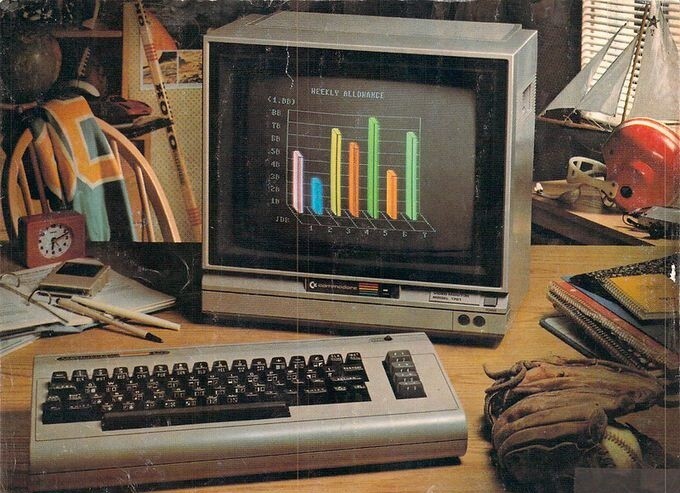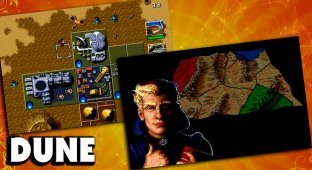Some cult computer games of the 90s (1 photo + 15 videos)
The 90s of the 20th century were a golden time for computer games. Back then, no one could blame a new game for “borrowing,” “poor mechanics,” “bad graphics,” and all the other sins that gamers, fed up with the abundance of modern games, like to seek out. 
Many games from the 90s remain in our hearts forever. Do you want to feel nostalgic and remember what it was like to play iddqd and idkfa in Doom or play Tomb Raider all evening until your parents sent you to bed? Then I present to you the top 15 cult computer games of the 90s. All participants in the selection are arranged in order of appearance.
Civilization (1991)
This game is the founder of the turn-based strategy genre. And at the same time it makes the player feel like practically a god of the virtual world. After all, the development of an entire civilization depends only on his decisions! Acting as the leader of a nation, the player directs its development through eras, from the dawn of humanity to the present. Responsibilities are a dime a dozen, including conducting military campaigns, strengthening economic power, expanding borders and advancing scientific research. At the same time, one must always keep in mind the aspirations and actions of competing states!
Wolfenstein 3D (1992)
Dominate, conquer, multiply the fascists in the game by zero - what else did a young gamer of the 90s need? Well, maybe some first aid kits, food and ammunition... In this game, the creators took an interesting approach to visualization, combining 3D space in level design and 2D sprites of enemies and environmental elements, which were drawn from pre-selected viewing angles.
Mortal Kombat (1992)
One of the most popular video games of the 90s of the 20th century, it is a classic representative of fighting games in 2D format. And its plot revolves around bloody battles in a tournament called “Mortal Kombat”. The most recognizable elements of the Mortal Kombat series were introduced into this game, including Fatality. One of the significant innovations was the introduction of the juggling technique, which became extremely popular and found application not only in fighting games, but also in other genres, expanding the boundaries of game mechanics. During combat, when a fighter is in the air, the player cannot control him. The character becomes vulnerable to enemy attacks until the moment he touches the ground again. To take advantage of this situation, the player must find a way to launch the opponent into the air and prevent them from landing by performing a series of punches.
Alone in the Dark (1992)
The game, which became the progenitor of three-dimensional survival horror, was first presented to the public in 1992, and a year later received an award for outstanding graphics and originality at the European Computer Trade Show. Later, in 2009, Empire magazine included it in their list of the "100 Greatest Games of All Time". “Alone in the Dark” takes players to the twenties of the last century, to Louisiana, where the main character finds himself in an old mansion filled with monsters, mysteries and hidden threats. To save the character from sinister forces, players will have to collect objects, solve mysteries, fight enemies and explore the complex world of the game, which does not unfold according to a linear scenario.
Dune 2 (1992)
Dune II is one example of using the book to create a complex real-time strategy game. Players were given the opportunity to play as any of the Great Houses (Atreides, Ordos or Harkonnens), each of which had their own characteristics. For example, the Harkonnens had unique heavy units - the Destroyer tank and a rocket with the telling name “Hand of Death”. And the Atreides had an acoustic tank. And this variability, as well as the exciting gameplay, outstanding sound and graphics at that time, made the game one of the gaming pearls of the 90s.
Doom (1993)
The massively popular computer game Wolfenstein 3D may have invented the first-person shooter formula that Doom used, but the 1993 game refined and popularized it. Plus, Doom was a pioneer of multiplayer games. This happened thanks to the innovative Deathmatch mode, and the title is still widely used today. To this day, classic Doom has an active modding community that has helped the game remain relevant in the many decades since its original release.
Need for Speed (1994)
This game marks the beginning of the best racing franchise ingame history. NFS included a variety of cars, and offered various game modes. However, the race tracks were similar to each other. A unique feature of Need for Speed was the introduction of police chases, which added complexity to the passage. Each victory in the races allowed players to earn points that influenced their place in the overall leaderboard.
Command & Conquer (1995)
The idea of creating alternate reality video games may have originated with early RTS games. One example is Command & Conquer, which takes place in an alternate Earth timeline in which the world is divided into two global factions. Westwood Studios, the same company that created the Dune franchise, has taken the successful design of that game into a new project and combined it with the concept of modern warfare.
The main feature of the game are videos with real people that are woven into the storylines. By the way, Command & Conquer Remastered Collection was released in 2020. So if you're missing the Brotherhood of Nod or GDI, you know where to look for them.
Warcraft II: Tides of Darkness (1995)
When Warcraft II: Tides of Darkness was released in late 1995, the real-time strategy genre was in its infancy. Dune II was already three years old, but Command & Conquer had only just come out, so the genre's full potential had not been tapped. However, Blizzard's Warcraft II brought the genre to the forefront of computer gaming alongside first-person shooters.
Warcraft II had it all, from a compelling single-player campaign to a flexible and addictive multiplayer mode that truly set the game apart from the competition. But most of all, the game exuded personality thanks to its rousing orchestral soundtrack, voice acting and sound effects.
Duke Nukem 3D (1996)
It took 300 thousand dollars to develop one of the cult computer shooters of the 90s. However, the game paid off handsomely, bringing the creators millions of dollars. What do you remember about this game? A brutal hero with his vulgar jokes, mirrors in which you could see the character’s reflection, colorful colors, a huge number of references to pop culture, a variety of enemies and weapons, multiplayer... And, of course, busty beauties on posters and more!
Tomb Raider (1996)
Lara Croft is one of the most iconic video game heroines of all time, and her debut was a huge success. This plucky tomb raider showed that female characters can be more than just a damsel in distress. By the way, about breasts (what could we do without it, if it was one of the important components of the success of the game?).
If you are interested in how Lara has changed over time, I recommend taking a look at the article “The Evolution of Female Breasts in Video Games.” Tomb Raider set the standard for future adventure games. It has since spawned numerous sequels, reboots and adaptations, although the future of the franchise is now in question following disappointing sales of Shadow of the Tomb Raider and the sale of that IP (intellectual property) to Embracer Group.
Resident Evil (1996)
Neither the excellent Resident Evil: Village, which has been lauded by fans and critics (thank you, Lady Dimitrescu), nor the other Resident Evil installments could exist without the classic 1996 release. Thanks to him, the Resident Evil franchise has taken root in the cultural space for a quarter of a century, spawning many works, including a dozen video games, a trio of remakes, fifteen additional games, seven films, a quartet of animated films, a couple of TV series, as well as novels, mobile games and comics.
The creation of the Resident Evil game world fell on the shoulders of designer Shinji Mikami, who was inspired not only by Capcom's 1989 project Sweet Home, where a team of heroes unraveled the mysteries of a cursed mansion, but also by the game Alone in the Dark, as well as zombies -films directed by George Romero. These influences led to the decision to adapt the game for Western audiences. This is how the originally planned remake of “Sweet Home” turned into a horror with elements of survival.
Diablo (1997)
The story of this legendary hack-and-slash game follows the player as he ventures into the dungeon beneath the city of Tristam to confront the Lord of Hell. The gloomy atmosphere, well-thought-out locations, procedurally generated objects, including monsters, quests and items, as well as the variety of passages ensured the game's enormous popularity. It has since spawned many sequels and influenced many Hack-and-Slash RPG games. NNot so long ago, in the summer of 2023, Diablo 4 was released.
StarCraft (1998)
While many other classic RTS games have waned in popularity over time, StarCraft retains a large base of dedicated fans to this day. Instead of choosing from a variety of races, the StarCraft developers honed in on three: Zerg, Protoss, and Terran. “Of course, we wanted the game to have scary aliens, some other aliens, but smarter ones, some people - well, we couldn’t come up with any more ideas.
So we pretty quickly came up with the idea of a three-race game,” recalls Bob Fitch. StarCraft also featured high-quality cutscenes that were integral to the series' storyline. This game has become so popular that since 1999 it has been included in various professional e-sports competitions, in which prize pools amount to hundreds of thousands of dollars.
Half-Life (1998)
Valve Corporation is a game developer known for setting a high standard for the quality of its products. A prime example is the original Half-Life, which was released in 1998 as a PC exclusive. The game later moved to consoles and other computer operating systems such as Linux and OS X.
With an aggregate score of 96% on Metacritic, Half-Life is one of those games that never goes out of style. It revolutionized the video game genre with its level design and gameplay. The second part was even better, but it was released in 2004, so it was not included in this list.






















